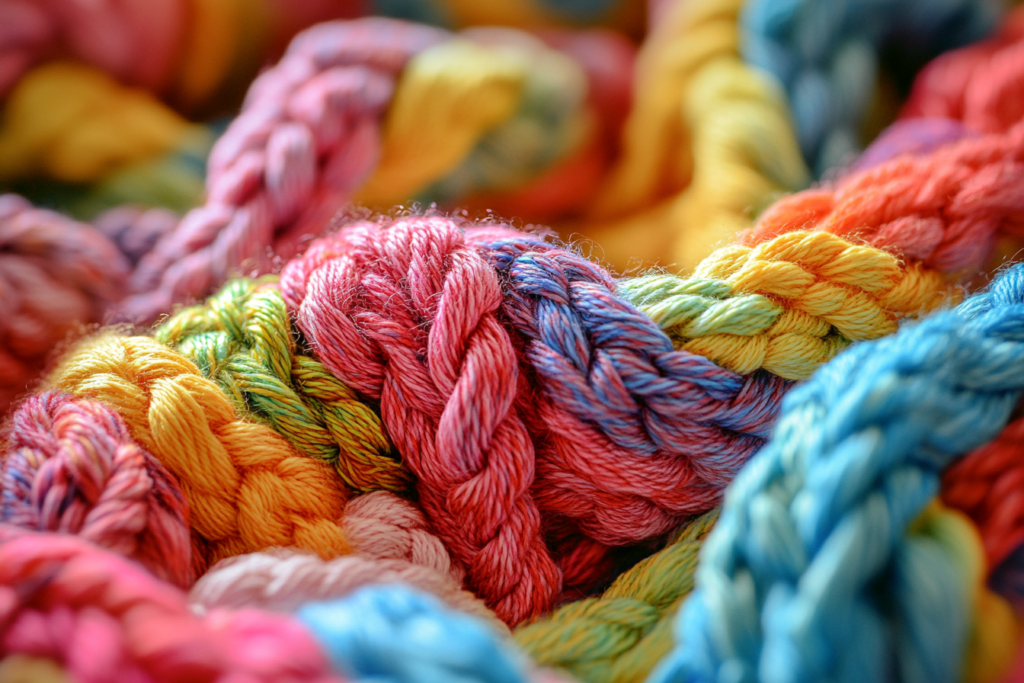Knit Fabric: The Flexible and Comfortable Textile Made from Loops of Yarn
Meta Description: Knit fabric is made by looping yarn to create a stretchy, breathable, and comfortable textile. Learn about its types, properties, and uses in fashion and sportswear.
What is Knit Fabric?
Knit fabric is a textile created by interlooping yarn, forming a flexible, stretchable structure. Unlike woven fabrics, which are made with crisscrossed threads, knit fabrics have loops that allow movement and elasticity, making them ideal for clothing, sportswear, and casual apparel.
Knit fabrics are widely used due to their soft texture, breathability, and comfort, making them essential in T-shirts, leggings, sweaters, and activewear.


Key Features of Knit Fabric
✔ Formed by Interlooping Yarn – Creates a stretchy, soft structure.
✔ Naturally Flexible & Elastic – Provides ease of movement.
✔ Lightweight & Breathable – Perfect for casual and activewear.
✔ Does Not Fray Easily – More resilient than woven fabrics.
✔ Can Be Stretchy or Structured – Depending on the knitting method.
Types of Knit Fabric
1. Weft Knit (Single Knit) – Soft & Stretchy
- Made by interlocking loops in a horizontal direction.
- Common in T-shirts, leggings, sweaters, and sportswear.
- Includes jersey knit, rib knit, and interlock knit.
2. Warp Knit – More Stable & Durable
- Loops are formed in a vertical direction, providing less stretch than weft knits.
- Found in swimwear, lingerie, and performance fabrics.
- Includes tricot, raschel, and Milanese knits.
3. Double Knit – Thick & Structured
- Uses two sets of needles, creating a denser, reversible fabric.
- Seen in jackets, structured dresses, and premium knitwear.
- Examples include interlock and ponte knits.
Knit vs. Woven Fabrics
| Feature | Knit Fabric | Woven Fabric |
|---|---|---|
| Structure | Loops of yarn | Interlaced threads |
| Stretch | Naturally stretchable | Less stretch unless elastane is added |
| Breathability | High | Varies by weave type |
| Best For | T-shirts, activewear, sweaters | Suits, dress shirts, denim |
| Edge Fraying | Does not fray easily | Requires hemming to prevent fraying |
Knit fabrics are ideal for movement and comfort, while woven fabrics provide structure and durability.
Common Uses of Knit Fabric
📌 T-Shirts & Sweatshirts – Soft, breathable jersey knit is a staple for casual wear.
📌 Leggings & Activewear – Stretchy spandex or performance knits enhance movement.
📌 Sweaters & Cardigans – Cozy ribbed or interlock knits provide warmth.
📌 Underwear & Lingerie – Lightweight, elastic tricot knits offer comfort.
📌 Dresses & Skirts – Flowy knit jersey or ponte fabrics create draping silhouettes.
How to Care for Knit Fabrics
✔ Wash in Cold Water – Prevents shrinking and stretching.
✔ Avoid Hanging Heavy Knits – Lay flat to dry to maintain shape.
✔ Use Gentle Detergents – Protects fiber softness and elasticity.
✔ Steam Instead of Ironing – Prevents damaging the loops.
Why Choose Knit Fabrics?
✔ Flexible & Comfortable – Moves with the body.
✔ Breathable & Lightweight – Perfect for everyday wear.
✔ Easy to Maintain – Resists fraying and is low-maintenance.
✔ Versatile for Casual & Sportswear – Used in T-shirts, leggings, and hoodies.
Conclusion: The Comfort & Versatility of Knit Fabrics
Knit fabrics are a fundamental textile in fashion, offering unmatched comfort, flexibility, and breathability. Whether used in casual wear, sportswear, or cozy sweaters, knit textiles remain a go-to choice for designers and consumers alike.
With their soft texture, natural stretch, and wide range of styles, knit fabrics continue to be a wardrobe essential in modern clothing.



